Emotions are an important part of our life. They influence our actions, our perception and are associated with memories. Often, however, people find it difficult to talk about their own emotions, what influences themselves and their social environment.
The subject of my master thesis was to investigate possible forms of visualization and communication of emotions and to create a tool in the form of an electronic diary. It should encourage people who have difficulties in communicating their emotions to question and deal with them and make it easier to express emotions freely. The tool is tested on the basis of the use case of psychotherapy, since for this form of therapy the communication between patient and therapist is essential.
After an initial phase of research and user-centered design methods like sketching and personas, the pool of ideas was confined to three designs, which should connect emotions with different aspects, like emotions and images or emotions and intensity.
These designs where tested with users in form of mock ups through wizard of ozing, designed to be tangible in order to test the smoothness of the interaction, the haptic and the sensation of touch.
The final design is a functional prototype consisting of two parts, a tree and sprout, which serve as input and output devices.
Built from papier-mâché and Arduino parts, the EmotionTree is responsible for processing and saving the input. It consists of 8 branches where each branch symbolizes an emotion of Plutchiks wheel of emotion: joy, trust, fear, surprise, sadness, disgust, anger and anticipation.
Emotions are saved by pressing the leaf of the concerning branch, the longer it is held, the more intense the feeling is. By letting go, the whole tree fills up with the color of the emotion. After some time, depending on the intensity of the emotion, the LED lights will fade again until all lights have gone out.
The sprout saves emotion diary entrances and makes it possible to look through previous periods, showing the entry on a screen and by the color of its leaves.
Results:
- supports people at expressing their emotions in a non-verbal way
- user friendly design as result of user-centered evaluation methods with focus on interaction design
- feeling of affirmation and possibility to relieve frustrations are supported through the haptic of the design
- increases self-reflection and offers invitation to communicate with others
- useful also for other fields of application for therapy, relationships and communication in general

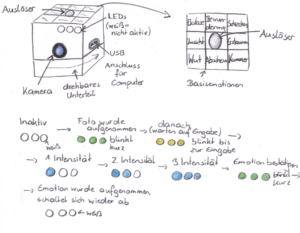

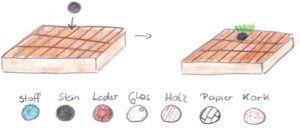

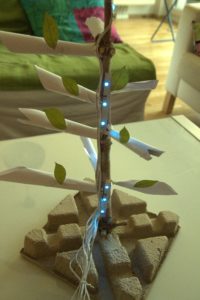











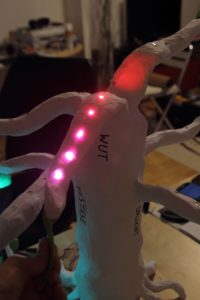



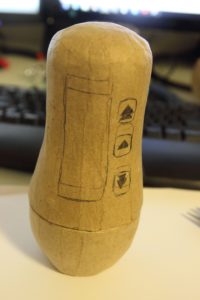
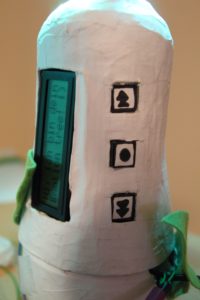

Kommentare sind geschlossen.